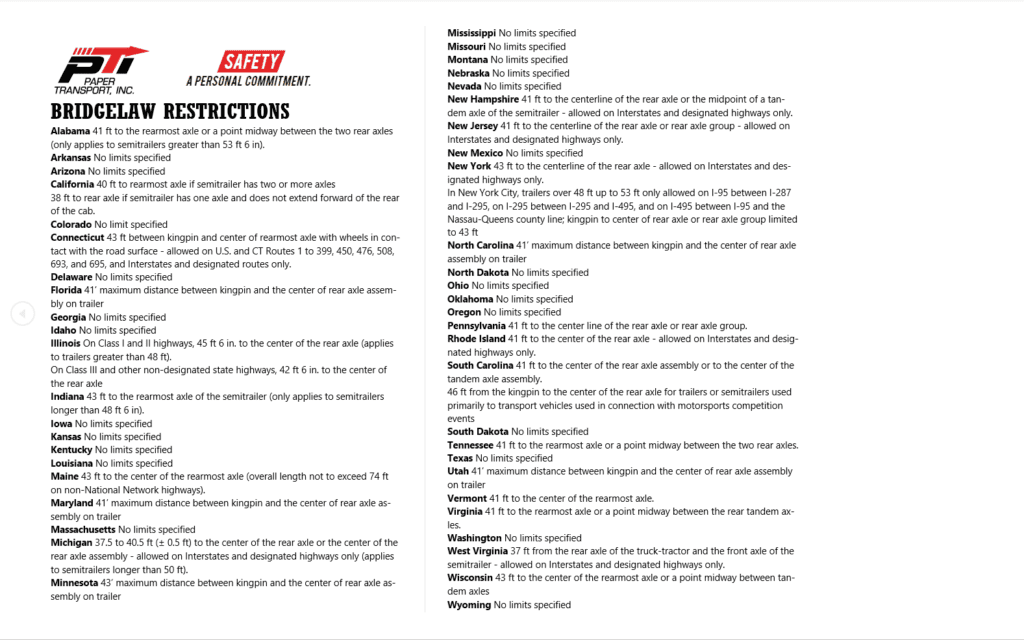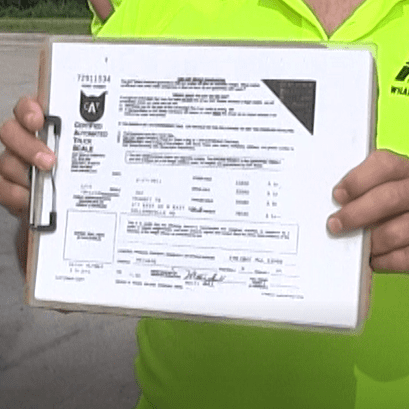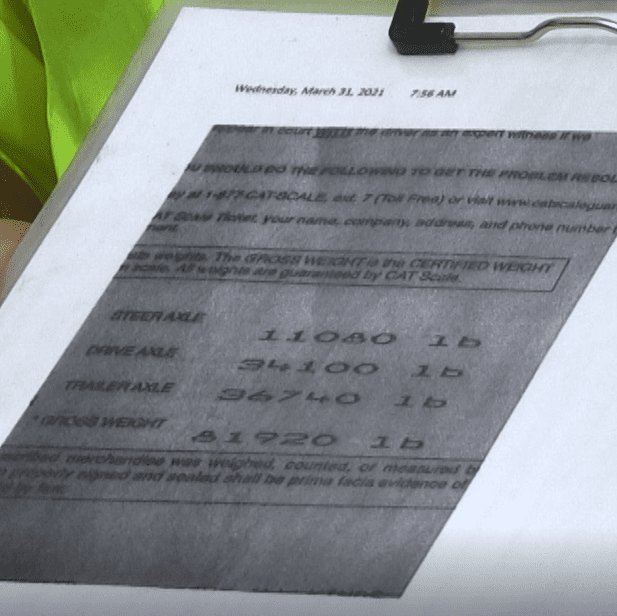Drivers must deal with sliding tandem axels for weight adjustments. On a trailer, tandem axels are moved forward or backwards depending on the legalities of the weight distribution. The law that refer to what is a “legal weight distribution” are Bridge Laws.
State Bridge Laws
If a driver is passing through multiple states, you must set your Bridge Law, weight, and tandem axels to the most restricted Bridge Law. For example, Wisconsin’s Bridge Law is 43 feet to the center of the rearmost axle or a point midway between tandem axles. But, a driver headed to California, you must set your Bridge Law to be legal in all states you pass through. Therefore, California has the most restricted Bridge Law, which is 40 feet to rearmost axle if semi trailer has two or more axles or 38 feet to rear axle if semi trailer has one axle and does not extend forward of the rear of the cab.

Sometimes, the weight of the load cannot be changed by sliding the tandem axels. Then the load must be reloaded to put more weight in the front of the trailer. If a trailer is heavy, drivers should slide their tandem axels backwards. If the drives are too heavy, drivers should slide their tandem axels forward.
CAT Scale Tickets for Weighing Semi and Trailer
To check that your weight is legal, drive to the nearest scale to check before leaving from your loading area. A driver should always be legal weight! Drivers need to take into account fuel weight and what the weight of the fuel will. Make sure to communicate any weight difficulties or setbacks to your dispatch.


Certified Automated Truck, or CAT Scale tickets are the paper receipt for the weight of the truck. According to CAT Scale’s website when drivers receive an overweight fine after weighing legal on a CAT brand scale, CAT Scale Company will pay the fine. This is as long as the driver has not altered their tandems after the official ticket.
